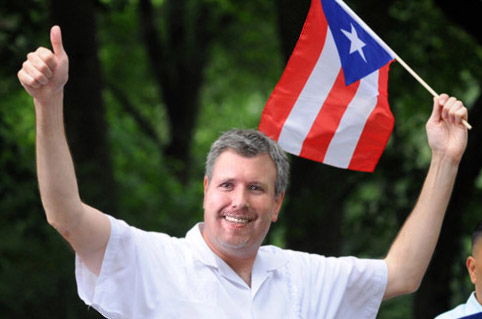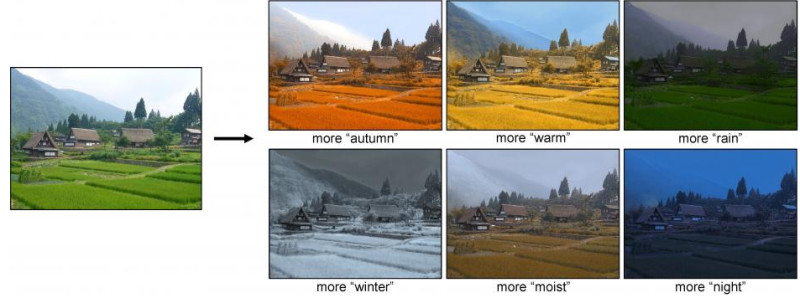It looks like you're using an Ad Blocker.
Please white-list or disable AboveTopSecret.com in your ad-blocking tool.
Thank you.
Some features of ATS will be disabled while you continue to use an ad-blocker.
13
share:
Pics or it didn't happen? Seeing is believing?
Everywhere we look, we see digitally manipulated images. We're at a point where even the most proficient experts in digital imagery and forensic analysis would be hard pressed to identify the edits of the most skilled editors. The untrained eye doesn't even stand a chance. Consider the following photoshop I did of my friend's face (second pic) on Bill De Blasio's body (first pic) last year:


I'm not a professional image editor, I'm completely self-taught and something like this takes me 20-30 minutes to do. While I'm not a professional, I am an avid hobbyist and the sort of person who knows my way around a few professional grade image editors and so I tend to take notice of interesting developments in image editing.
I think this is also an area of particular concern for most ATS users with an interest in conspiracies, UFOs and the paranormal. So I thought I share some information from articles I read this week about two new pieces of software that make it even easier to produce convincing manipulations.
Wired - Editing tool lets you manipulate 3D objects in 2D photos
Though the software was designed with manipulating 3D objects in 2D images in mind, in the embedded video above, you can see where they've even used the software to animate the flight of an origami crane.
Science Daily - Photo editing algorithm changes weather, seasons automatically in your shots

image source
The paranoiacs out there might also find it noteworthy that the research was supported by the Intelligence Advanced Research Projects Activity (IARPA) via Air Force Research Laboratory and the National Science Foundation.
Everywhere we look, we see digitally manipulated images. We're at a point where even the most proficient experts in digital imagery and forensic analysis would be hard pressed to identify the edits of the most skilled editors. The untrained eye doesn't even stand a chance. Consider the following photoshop I did of my friend's face (second pic) on Bill De Blasio's body (first pic) last year:


I'm not a professional image editor, I'm completely self-taught and something like this takes me 20-30 minutes to do. While I'm not a professional, I am an avid hobbyist and the sort of person who knows my way around a few professional grade image editors and so I tend to take notice of interesting developments in image editing.
I think this is also an area of particular concern for most ATS users with an interest in conspiracies, UFOs and the paranormal. So I thought I share some information from articles I read this week about two new pieces of software that make it even easier to produce convincing manipulations.
Wired - Editing tool lets you manipulate 3D objects in 2D photos
It is very common for objects to be resized or have their positions within the frame altered slightly within the 2D image plane, but the new tool will let people turn or flip objects, which will show bits of them that weren't even captured by the camera. The secret to this is that the software uses publicly available 3D models of objects to inform the editing software how to complete the geometry and the parts of the object not on show. By studying the structure and symmetry of an object, the software can fill in the blanks to recreate the object in its entirety -- or at least make a best guess and what it would be like.
Though the software was designed with manipulating 3D objects in 2D images in mind, in the embedded video above, you can see where they've even used the software to animate the flight of an origami crane.
Science Daily - Photo editing algorithm changes weather, seasons automatically in your shots

image source
A computer algorithm being developed by Brown University researchers enables users to instantly change the weather, time of day, season, or other features in outdoor photos with simple text commands. Machine learning and a clever database make it possible. A paper describing the work will be presented at SIGGRAPH 2014.
The idea behind the program is to make photo editing easy for people who might not be familiar with the ins and outs of complex photo editing software.
To start the project, Hays and his team defined a list of transient attributes that users might want to edit. They settled on 40 attributes that range from the simple -- cloudy, sunny, snowy, rainy, or foggy -- to the subjective -- gloomy, bright, sentimental, mysterious, or calm.
The next step was to teach the algorithm what these attributes look like. To do that, the researchers compiled a database consisting of thousands of photos taken by 101 stationary webcams around the world. The cameras took pictures of the same scenes in varying of conditions -- different times of day, different seasons and in all kinds of weather. The researchers then asked workers on Mechanical Turk -- a crowdsourcing marketplace operated by Amazon -- to annotate more than 8,000 photos according to which of the 40 attributes are present in each. Those annotated photos were then fed through a machine learning algorithm.
The paranoiacs out there might also find it noteworthy that the research was supported by the Intelligence Advanced Research Projects Activity (IARPA) via Air Force Research Laboratory and the National Science Foundation.
edit on 2014-8-10 by theantediluvian because: (no reason given)
It's a dangerous slippery slope for evidence. it would not surprise me at all if in the near future DNA would be able to be computer enhanced if not
fraudulent.
originally posted by: MichiganSwampBuck
a reply to: proob4
I heard (no proof or research) that film photography is making a comeback.
Why not use film for photographic proof?
Only use the negative or take slides (film positives) to provide unaltered proof.
Or analog video.
Film has a loyal following and I've also read in the last couple years about film being trendy, but sales of camera film have plummeted since 1999 along with sales of traditional cameras. It's like records — sure there are a few people who go (further and further) out of their way for vinyl (if they can get it) but 99.99% of us haven't purchased one since they last stopped mass production 20+ years ago.
These days, with over 50% of the population walking around with a smart phone with one or two high resolution digital cameras, the likelihood that picture source isn't digital is quickly diminishing. Then there's the fact that the average person is not going to be able to request a photograph for testing.
I was giving this some thought a couple months back and I think a workable answer in some cases might be a digital image format that is resistant to tampering. Perhaps something like symmetrical public key encryption so that the image is encrypted with a private key when taken and the header contains a public key for decryption.
Traditional Film is still 100% alterable. Moving back to traditional film would just make it harder for the average Joe to alter photos.
Besides... even if film was unalterable, there is still only one original master reel. The moment that the film is reproduced, either in film or digitally, its initial theoretical infallibility is lost.
Besides... even if film was unalterable, there is still only one original master reel. The moment that the film is reproduced, either in film or digitally, its initial theoretical infallibility is lost.
edit on 10-8-2014 by LeviWardrobe because: (no reason given)
originally posted by: proob4
It's a dangerous slippery slope for evidence. it would not surprise me at all if in the near future DNA would be able to be computer enhanced if not fraudulent.
We just can't trust anything anymore. Not pictures. Not even DNA.
Scientists Prove DNA Evidence Can Be Fabricated
a reply to: theantediluvian
This is exactly why I've been saying for years now. Since the late ninties.
That between technology and corruption, our legal system is broken beyond
repair. I couldn't sit on a jury and belive any evidence brought against any
one for anything. We know beyond any doubt that if evidence can be falsified?
It will be. I couldn't sit on jury and believe anyone was guilty of any thing.
Unless I was there to see the crime with my own eyes.
This is exactly why I've been saying for years now. Since the late ninties.
That between technology and corruption, our legal system is broken beyond
repair. I couldn't sit on a jury and belive any evidence brought against any
one for anything. We know beyond any doubt that if evidence can be falsified?
It will be. I couldn't sit on jury and believe anyone was guilty of any thing.
Unless I was there to see the crime with my own eyes.
A picture is worth a thousand words. In conspiracy discussions it approaches four million.
This is just a demonstration of Augmented Reality rendering. A great example of which is basically using a modified physically based render engine.
w3.impa.br...
Which is based upon LuxRender which if you know what you are doing is capable of producing photorealistic renders. The examples in this video appear more like game engine like algorithms, They might not be as realtime as is shown, but despite that but notice that the style of the images and the objects themselves are of low complexity, and the modification to the lighting of a scene is very simple.
These things add together to make a really great effect.
Still, neat demonstration, but nothing that hasn't been possible to do for many years
w3.impa.br...
Which is based upon LuxRender which if you know what you are doing is capable of producing photorealistic renders. The examples in this video appear more like game engine like algorithms, They might not be as realtime as is shown, but despite that but notice that the style of the images and the objects themselves are of low complexity, and the modification to the lighting of a scene is very simple.
These things add together to make a really great effect.
Still, neat demonstration, but nothing that hasn't been possible to do for many years
a reply to: ErosA433
It's not exactly the same thing. What you're talking about is overlaying virtual objects and what this software is doing is converting existing objects into virtual objects using 3D models from public model libraries. It also appears to be mapping the textures and rendering the lighting effects on it's own as well as filling in the missing background.
The software is freely available here, I'm going to give a whirl when I have a few hours to kill.
It's not exactly the same thing. What you're talking about is overlaying virtual objects and what this software is doing is converting existing objects into virtual objects using 3D models from public model libraries. It also appears to be mapping the textures and rendering the lighting effects on it's own as well as filling in the missing background.
The software is freely available here, I'm going to give a whirl when I have a few hours to kill.
originally posted by: MichiganSwampBuck
a reply to: proob4
I heard (no proof or research) that film photography is making a comeback.
Why not use film for photographic proof?
Only use the negative or take slides (film positives) to provide unaltered proof.
Or analog video.
What makes you think film can't be edited? It can.
a reply to: OccamsRazor04
It would be extremely hard to alter a still film negative or positive, and a contact negative would be detectable.
No one has even addressed the idea of using analog video tape yet.
It would be extremely hard to alter a still film negative or positive, and a contact negative would be detectable.
No one has even addressed the idea of using analog video tape yet.
originally posted by: LeviWardrobe
Traditional Film is still 100% alterable. Moving back to traditional film would just make it harder for the average Joe to alter photos.
Besides... even if film was unalterable, there is still only one original master reel. The moment that the film is reproduced, either in film or digitally, its initial theoretical infallibility is lost.
Darkroom manipulations are done on enlargements, not negatives or slides. Darkroom skills would be extremely rare in today's population. Being able to convincingly manipulate a negative or slide is beyond extremely rare and probably a lost art today.
Also, I'm not taking about reproductions of negative or positive film strips. If you want a picture that is likely unaltered, film is a good choice.
That doesn't mean a situation couldn't be staged or somehow faked and the photograph real. I'm sure there is a technical solution for every media in regards to faking an image. I would still trust an old film photo over a new digital one as proof or evidence.
new topics
-
Stalker 2 - Review from a Veteran
Video Games: 2 hours ago -
Does anyone have a link to download apple pay for androids
General Chit Chat: 3 hours ago -
Most INSANE internet rabbit hole
Secret Societies: 4 hours ago -
Joe Rogan conspiracy (maybe)
ATS Skunk Works: 7 hours ago -
Results of the use of the Oreshnik missile system in Dnepropetrovsk
World War Three: 10 hours ago -
Nigel Farage now the Most Favoured UK Politician
Regional Politics: 11 hours ago
top topics
-
Little Johnny and Larry should team up
General Chit Chat: 17 hours ago, 13 flags -
Results of the use of the Oreshnik missile system in Dnepropetrovsk
World War Three: 10 hours ago, 13 flags -
Most INSANE internet rabbit hole
Secret Societies: 4 hours ago, 8 flags -
Nigel Farage now the Most Favoured UK Politician
Regional Politics: 11 hours ago, 4 flags -
Joe Rogan conspiracy (maybe)
ATS Skunk Works: 7 hours ago, 4 flags -
Stalker 2 - Review from a Veteran
Video Games: 2 hours ago, 2 flags -
Does anyone have a link to download apple pay for androids
General Chit Chat: 3 hours ago, 1 flags
active topics
-
Inca stone masonry at Sacsayhuaman, Ollantaytambo and the Sun Temple
Ancient & Lost Civilizations • 10 • : Hansllune -
Results of the use of the Oreshnik missile system in Dnepropetrovsk
World War Three • 164 • : Freeborn -
Jaguar Rebrand Video Causes "WTF?" Moment - Seriously Weird
Automotive Discussion • 28 • : KnowItAllKnowNothin -
Does anyone have a link to download apple pay for androids
General Chit Chat • 8 • : tamusan -
Joe Rogan conspiracy (maybe)
ATS Skunk Works • 5 • : EyeoftheHurricane -
-@TH3WH17ERABB17- -Q- ---TIME TO SHOW THE WORLD--- -Part- --44--
Dissecting Disinformation • 3361 • : xuenchen -
President-Elect TRUMP Picks Former Florida A.G. PAM BONDI to be U.S. Attorney General.
2024 Elections • 59 • : VariedcodeSole -
Elon Says It’s ‘Likely’ He Buys Tanking MSNBC
Political Ideology • 76 • : Astrocometus -
Montelukast affects brain, caused 5 year old to attempt suicide
Medical Issues & Conspiracies • 12 • : lilzazz -
Stalker 2 - Review from a Veteran
Video Games • 2 • : CriticalStinker
13
